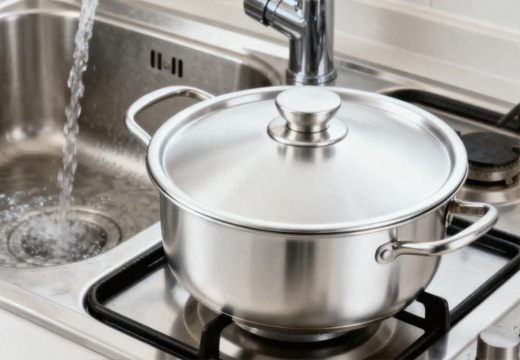The Corrosion Resistance of 304 Stainless Steel: A Workhorse Alloy
304 stainless steel, often referred to as A2 stainless steel (under the ISO 3506 standard), is one of the most common and versatile austenitic stainless steels in the world. Its popularity stems from an excellent combination of mechanical properties, formability, and, most importantly, its remarkable resistance to corrosion. This article explores the science behind 304’s corrosion resistance, its limitations, and its common applications.
The Secret: The Chromium Oxide Layer
The cornerstone of 304’s corrosion resistance is a thin, invisible, and adherent layer that forms on its surface: the passive film. This film is primarily composed of chromium oxide (Cr₂O₃).
- How it Forms: 304 stainless steel contains a minimum of 18% Chromium. When exposed to oxygen in the air or water, the chromium at the surface reacts with oxygen to create this stable, protective layer.
- Self-Repairing Property: The most remarkable feature of this layer is its ability to self-repair. If the surface is scratched or damaged, the chromium in the steel immediately reacts with ambient oxygen to reform the passive film, protecting the underlying metal from further attack.
Key Corrosion Resistance Properties Of 304 Stainless Steel
- Excellent Resistance to Atmospheric Corrosion: 304 performs very well in most normal atmospheric conditions, including rural, urban, and coastal environments. It resists rusting and tarnishing effectively.
- Good Resistance to A Wide Range of Chemicals: It has strong resistance to many organic chemicals, food acids, and various oxidizing chemicals. This makes it ideal for the food and beverage, pharmaceutical, and dairy industries.
- Oxidation Resistance: 304 can withstand intermittent service temperatures up to 870°C (1600°F) and continuous service up to 925°C (1697°F), making it suitable for many high-temperature applications.
Limitations And Vulnerabilities
Despite its strengths, 304 stainless steel is not suitable for all environments. Understanding its limitations is crucial for proper material selection.
- Chloride-Induced Pitting and Crevice Corrosion: This is the primary weakness of 304. In environments rich in chlorides (e.g., seawater, de-icing salts, coastal atmospheres), the passive film can break down locally, leading to:
- Pitting Corrosion: Highly localized attack that creates small pits or holes.
- Crevice Corrosion: Occurs in shielded areas, such as under gaskets, bolts, or deposits, where oxygen levels are low.
- Stress Corrosion Cracking (SCC): When 304 is subjected to tensile stress (from applied loads or residual stress from fabrication) and exposed to a corrosive environment, particularly chlorides, it can suffer from SCC. This is a sudden, brittle failure that can occur without significant warning.
304 Vs. 316 Stainless Steel For Harsh Environments
In environments where chlorides are present, 316 stainless steel is often the superior choice. The key difference is the addition of 2-3% Molybdenum in 316. Molybdenum significantly enhances resistance to pitting and crevice corrosion, making 316 the preferred material for marine applications, chemical processing, and coastal architectural projects.
Common Applications Of 304 Stainless Steel
Due to its balanced properties, 304 is found in a vast array of products:
- Kitchen Equipment: Sinks, countertops, pots, pans, and cutlery.
- Architectural Applications: Wall cladding, handrails, and trim.
- Food and Beverage Processing: Tanks, piping, and fermentation vessels.
- Chemical Containers: Tanks and transportation vessels for certain chemicals.
- Automotive Exhaust Systems.
Conclusion
304 stainless steel is a remarkably corrosion-resistant alloy that serves as the backbone of countless industries. Its protective chromium oxide layer provides robust defense against a wide spectrum of corrosive agents. However, its vulnerability to chlorides means that careful consideration must be given to the service environment. For applications involving saltwater or harsh chemicals, upgrading to 316 stainless steel is a prudent choice. Understanding these properties ensures the long-lasting performance and reliability of components made from this essential material.




